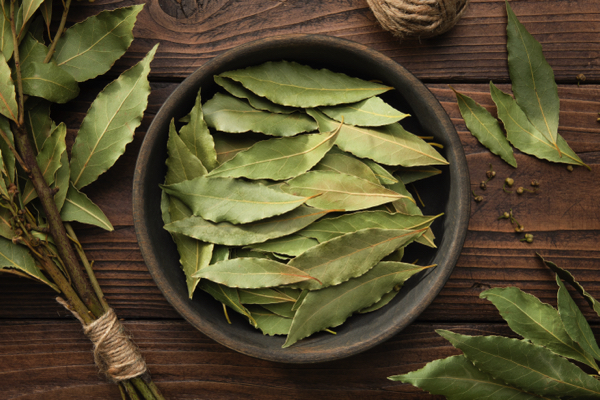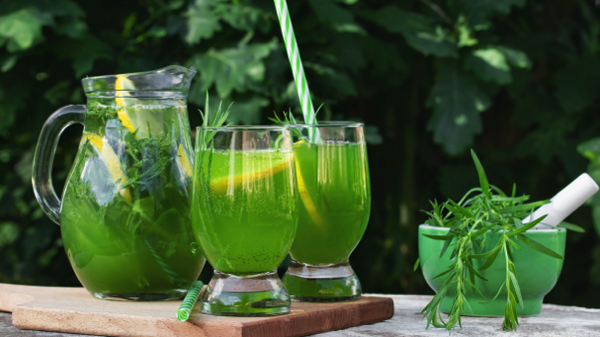Here’s why marshmallow plants are one of Mother Nature’s nutritional treasures
11/29/2024 / By Olivia Cook

The marshmallow plant, scientifically known as Malva sylvestris L., has been used for centuries in traditional medicine and as a functional food. Modern research, including a comprehensive 2021 review in the journal Evidence-based Complementary and Alternative Medicine (ECAM), highlights the diverse health-promoting properties of this remarkable plant. While further clinical trials are essential to confirm its therapeutic applications, current evidence provides a compelling case for its benefits.
It is a powerhouse of natural compounds with impressive health and wellness potential. Scientists have dug deep into its chemistry and found that it is packed with antioxidants, bioactive substances and nutrients that may explain its therapeutic uses. Here’s the breakdown of its key components and why they matter.
Phenolic compounds and flavonoids
Research shows that the flowers of M. sylvestris contain particularly high levels of plant-based phenolic compounds, including flavonoids – known for their anti-inflammatory and antioxidant properties, which help protect the body from harmful free radicals that can lead to chronic diseases.
When tested using advanced methods, marshmallow flower extracts demonstrated exceptional antioxidant power. Even the leaves, though slightly less potent, showed significant antioxidant activity when prepared with ethanol-based extracts.
Organic acids
The leaves of M. sylvestris contain an array of organic acids like citrate, fumarate, malate and malonate, which not only contribute to the plant’s antioxidant effects but also support its ability to boost immunity. By scavenging harmful free radicals, these compounds play a role in reducing oxidative stress and strengthening the body’s natural defenses.
Carbohydrates and polysaccharides
Beyond their role as an energy source, carbohydrates in M. sylvestris – especially its polysaccharides like pectins – show potential in regulating blood sugar and providing antidiabetic effects. Early animal studies suggest they may influence insulin levels.
Mucilage
Mucilage in M. sylvestris is comprised of complex sugars that form a gel-like substance. These compounds, including fructose, galactose, glucose and trehalose, act as natural antimicrobial agents. This quality adds to the plant’s reputation as a soothing remedy for inflammation and irritation – whether it’s in the digestive system, skin or throat.
They are particularly effective against pathogens like Verticillium dahliae – a fungus that causes “verticillium wilt” and is known for its ability to infect over 400 plant species. While Verticillium dahliae itself is harmless to humans and animals, its effect on a wide variety of plants, including staple crops, ornamental plants and trees, can contribute to food scarcity or reduced yields and ripple effects on human livelihoods and ecosystems.
Pigments
The plant owes its vibrant green leaves and flowers to pigments like chlorophyll A and B and xanthophylls. These natural compounds are not just about looks. They are bioactive and contribute to M. sylvestris’ antioxidant potential.
Fatty acids and sterols
The leaves and other parts of M. sylvestris are rich in essential fatty acids, such as omega-3 and omega-6, which are known to support heart health and reduce inflammation.
Studies highlight the presence of compounds like linoleic acid, linolenic acid and oleic acid, alongside plant sterols, such as beta-sitosterol and stigmasterol. These substances make M. sylvestris a promising candidate as a “nutraceutical” or a functional food with health benefits beyond basic nutrition. Regular consumption of omega-3s, for example, is associated with a lower risk of diabetes, heart disease and even cancer.
Vitamins
As a natural source of vitamin C (ascorbic acid) and vitamin E (tocopherols), M. sylvestris supports cellular health. Vitamin C strengthens the immune system, while vitamin E is a potent antioxidant that helps protect cells from damage. Together, these vitamins may boost skin health, reduce inflammation and even lower the risk of chronic diseases like cancer.
Enzymes
One particularly interesting discovery is the presence of sulfite oxidase in M. sylvestris. This enzyme is vital for breaking down sulfur-containing amino acids – a process critical to cellular health. Without it, toxic buildup can occur that may lead to severe consequences. The fact that his enzyme is naturally found in the plant speaks to its complex biochemistry and potential as a functional food.
Watch this video about the benefits, uses and side effects of marshmallow root.
This video is from the Holistic Herbalist channel on Brighteon.com.
More related stories:
Marshmallows can treat skin irritation and wounds – just not the store-bought variety.
10 Medicinal plants you should have in your home garden.
Herbs and honey: 7 Natural home remedies for a cough.
Sources include:
Submit a correction >>
Tagged Under:
alternative medicine, Althea officinalis, food cures, food is medicine, functional foods, herbal medicine, Herbs, marshmallow plant, natural cures, natural health, natural medicine, natural remedies, Naturopathy, nutrients, phytonutrients, plant medicine
This article may contain statements that reflect the opinion of the author
RECENT NEWS & ARTICLES
FoodIsMedicine.com is a fact-based public education website published by Food Is Medicine Features, LLC.
All content copyright © 2018 by Food Is Medicine Features, LLC.
Contact Us with Tips or Corrections
All trademarks, registered trademarks and servicemarks mentioned on this site are the property of their respective owners.



















